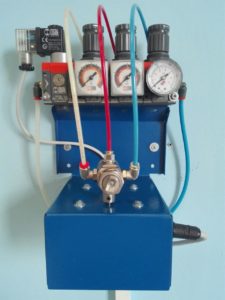
 Fixed industrial air humidifier with “dry fog” technology that can quickly increase the level of humidity in large environments without wetting.
Fixed industrial air humidifier with “dry fog” technology that can quickly increase the level of humidity in large environments without wetting.
Many types of textile materials in order to be processed properly without causing wrapping fibres and yarn breakages caused by a low level of humidity or by an excessive level of static electricity, require a constant and adequate level of humidification.
HUMY PLANT represents a technological answer with competitive investment costs and low level of maintenance.
In the textile industry the humidity level control is essential to increase the quality of products, reducing defects and at the same time increasing the productivity of textile machineries.
An environment that is too dry has a negative influence in the various production processes of all textile products from the carding of raw materials to the final production machines such as knitting machines and orthogonal looms.
Advantages:
The advantages obtainable in a correctly humidified environment with the device HUMY PLANT are:
– Reduction of yarn breakage due to an increase in toughness of the yarn itself.
– Reduction of static electricity in the air and on textile products which could be the cause of wrapping fibres during the spinning process.
– Removal of dust and fibres into the air.
– Cooling and effective reduction of air temperature.
– Maintaining a correct commercial weight of textile products avoiding a possible loss of profit.
Application principle:
The application of a fixed HUMY PLANT device in your production area is simple and inexpensive.
HUMY PLANT basically consists of:
– Spray nozzle “dry fog” with self-cleaning technology and single or double issue.
– NUOVA RIMATES electronic control unit complete with sensor for air humidity reading “HYGROST”.
– Compressed air and water canalization (purchased by the customer on site).
The number and type of nozzles (double or single) depend on the size and volume of the environment to be humidified and the type and quantity of production machines present in its interior.

